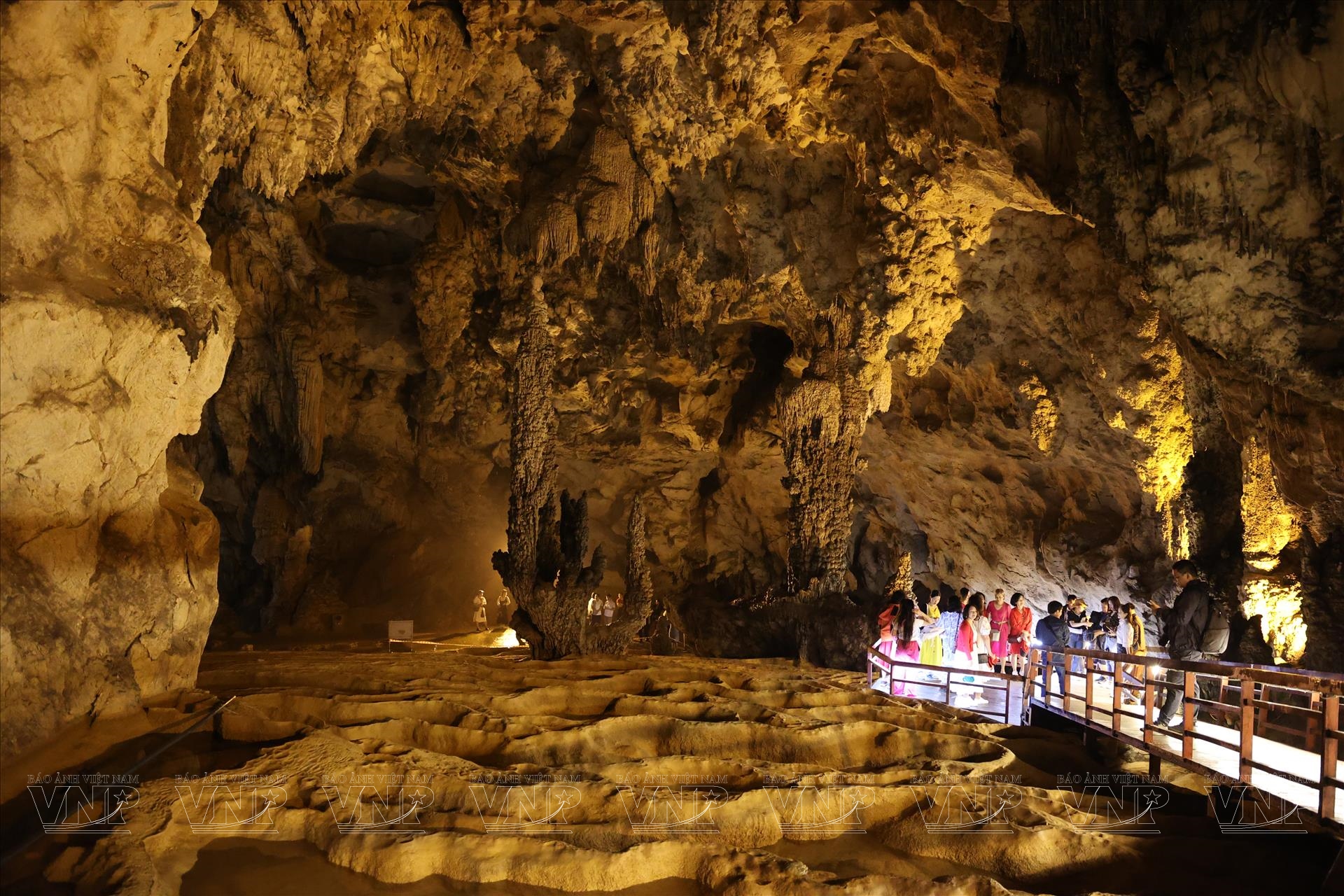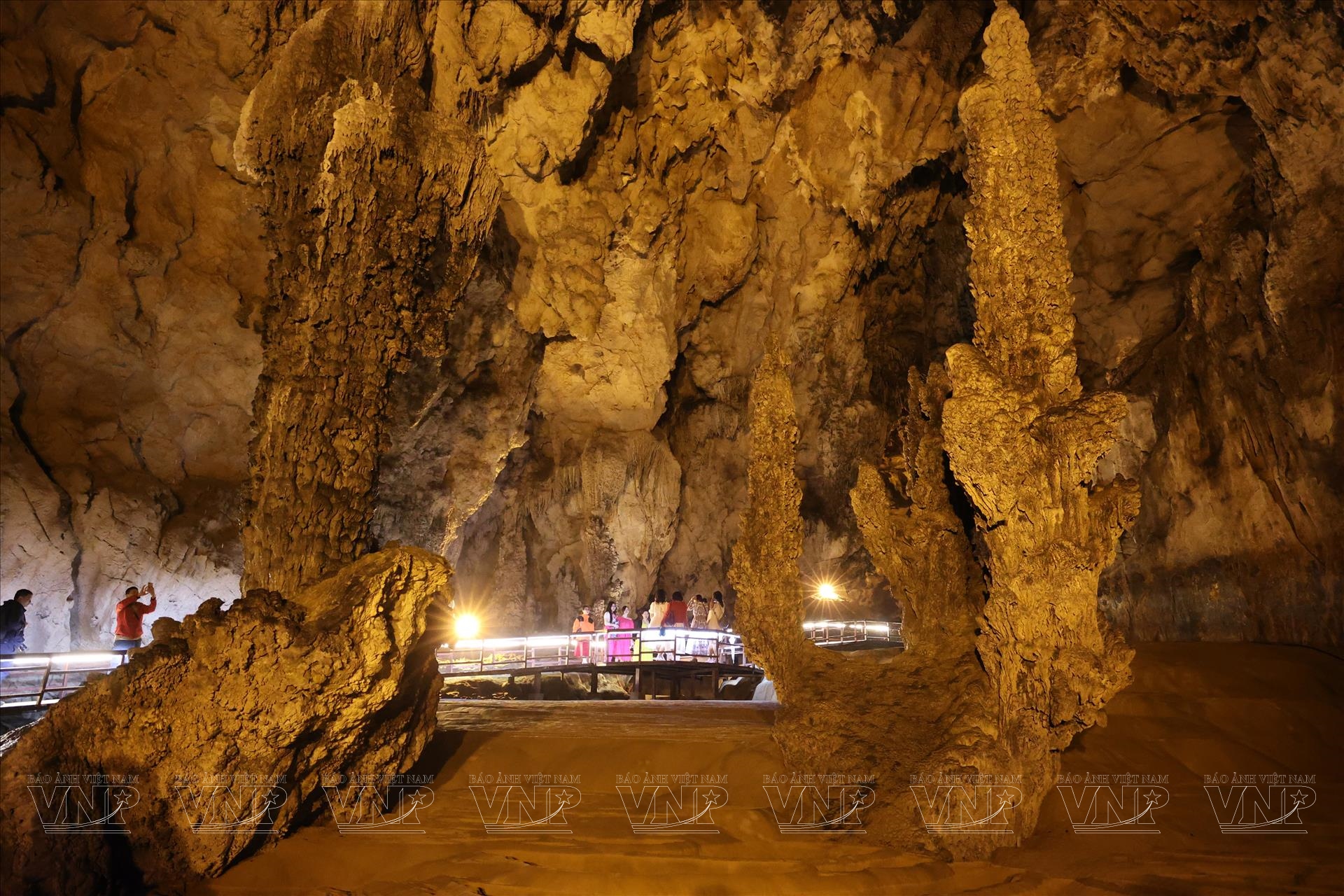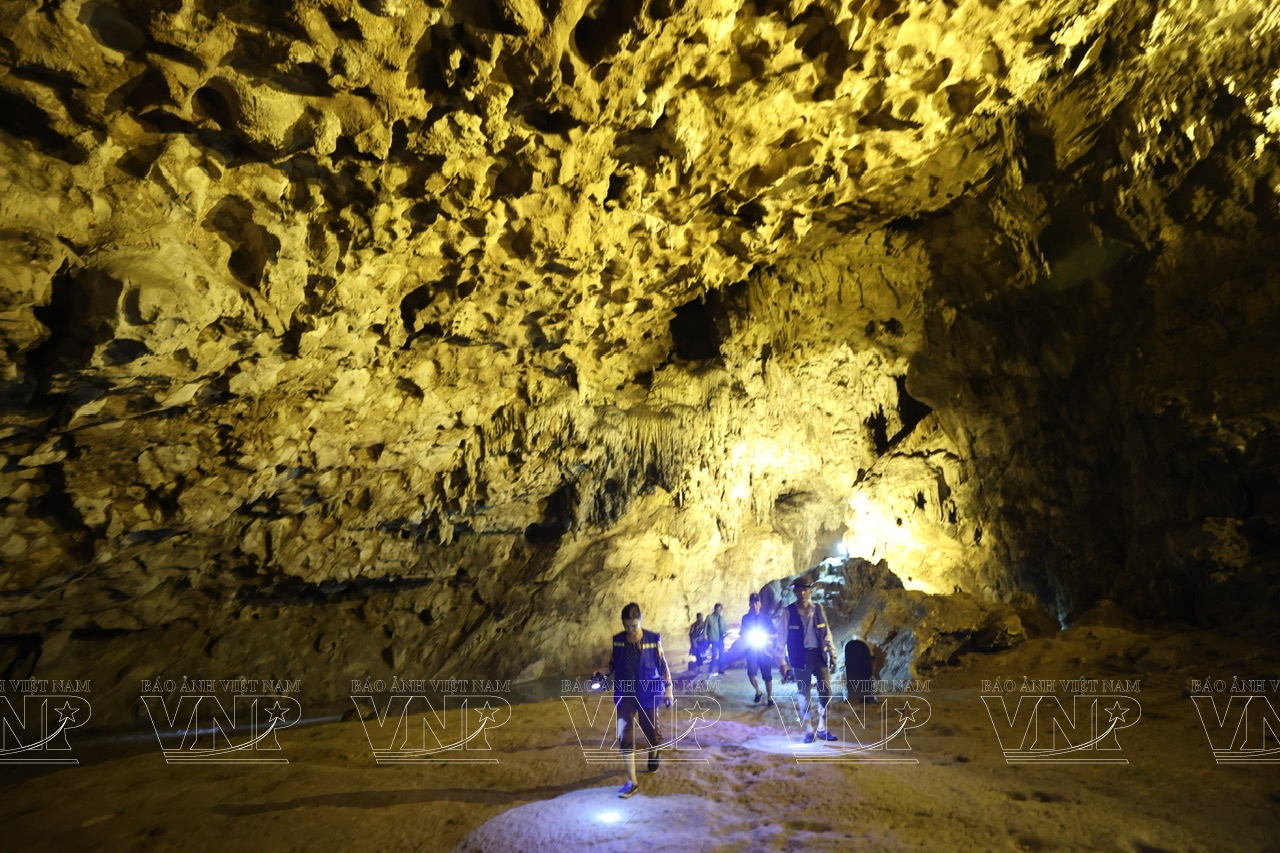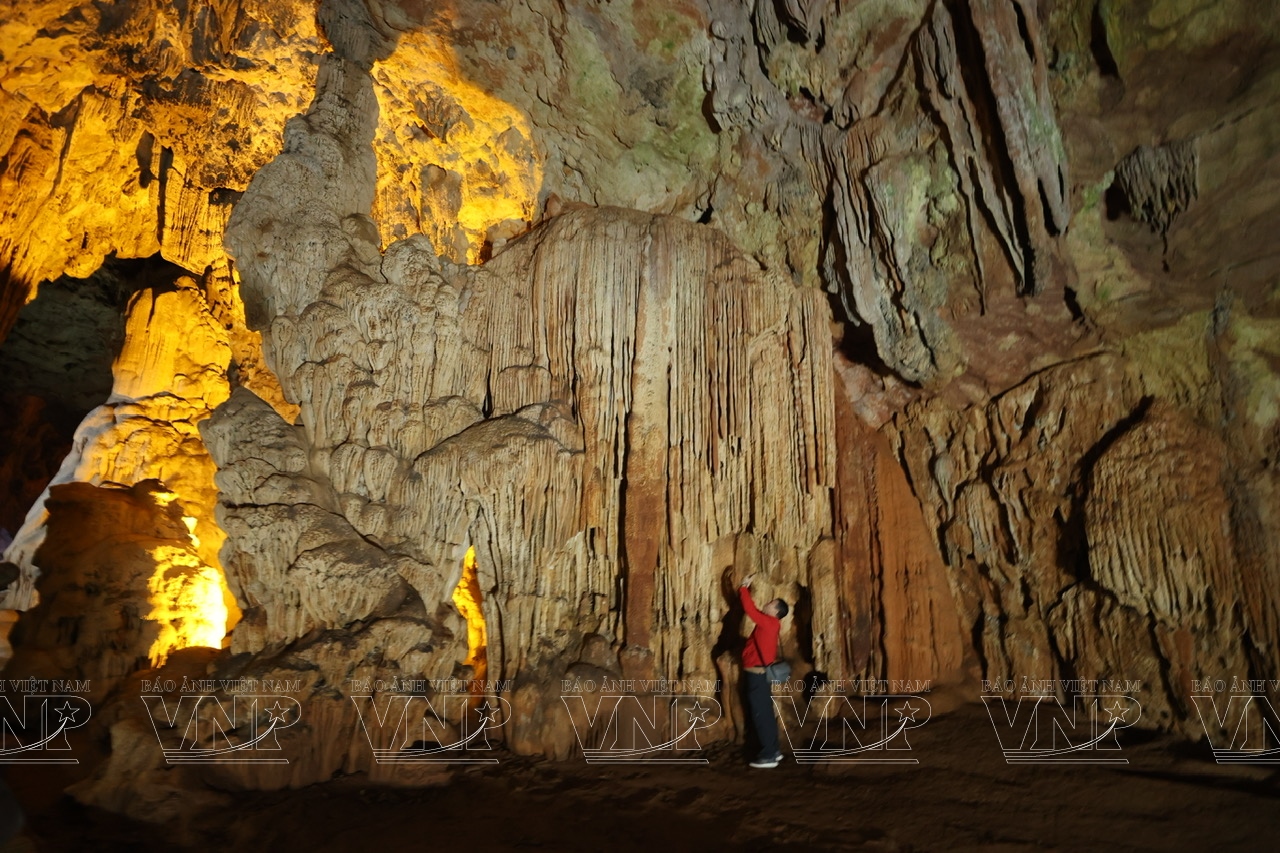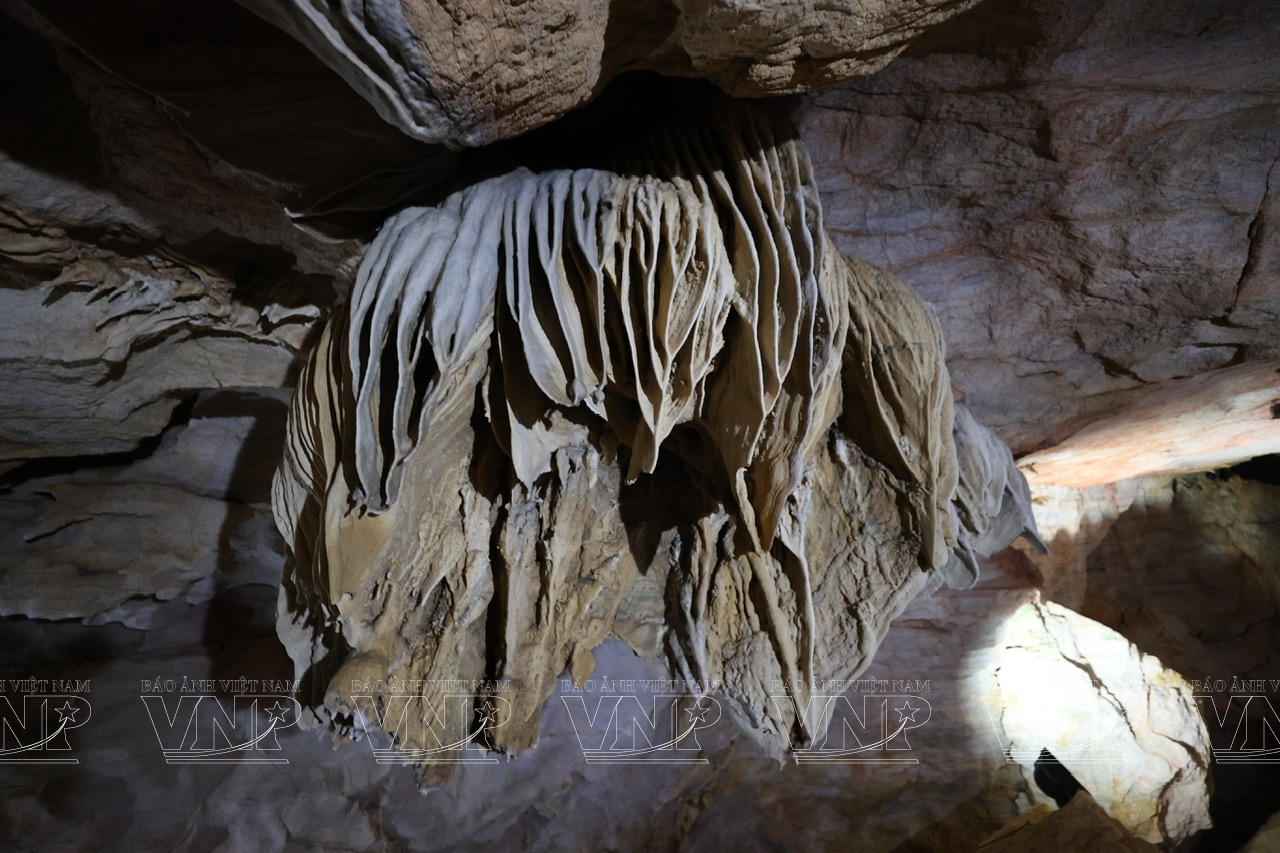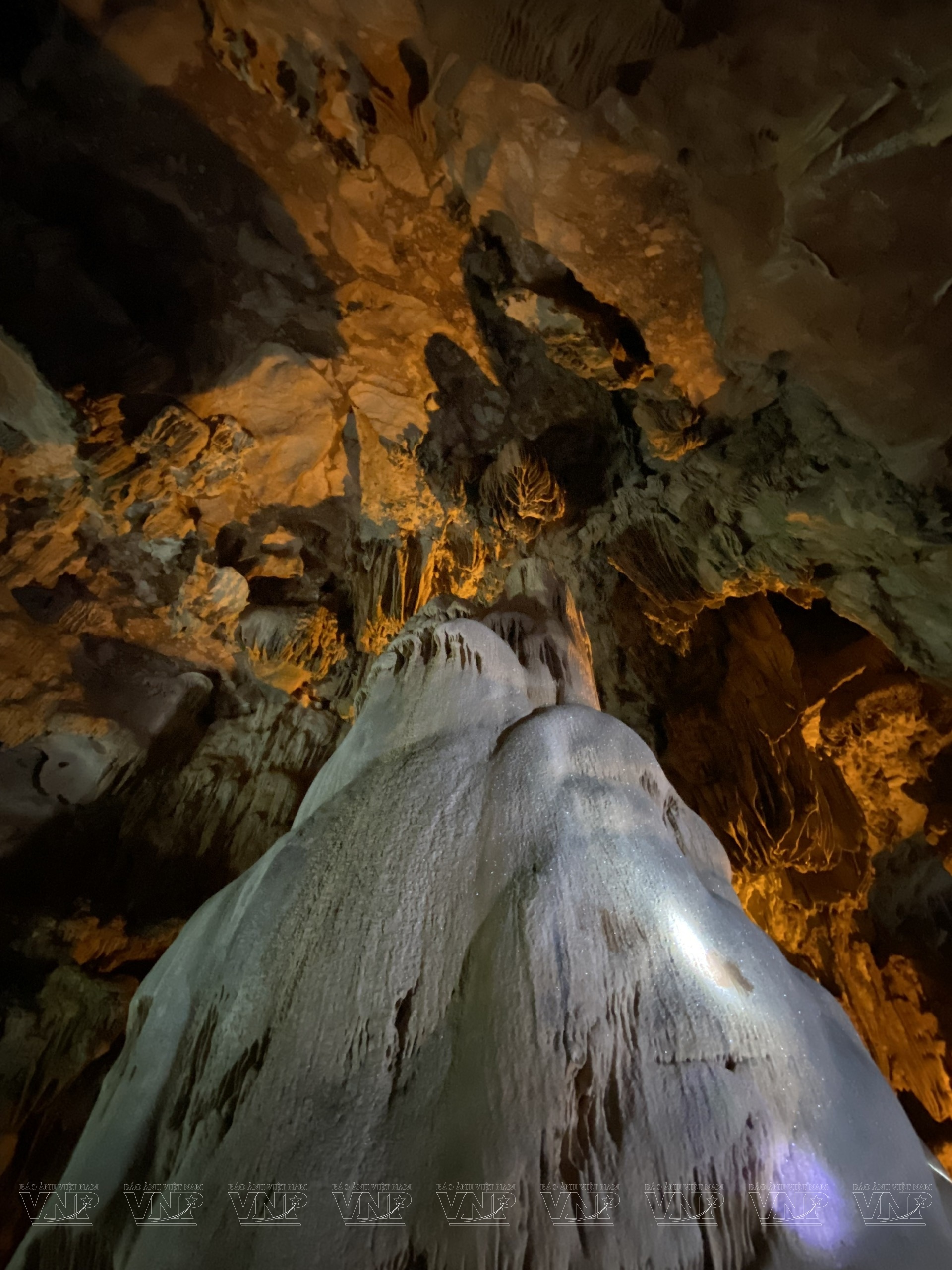The Enchanting Cave of Nguom Ngao
Nguom Ngao Cave - the name evokes mystery and brings travelers to the northernmost region of the country to explore and experience the enchanting beauty of a "palace" adorned with sparkling and mystical stalactites.
Nguom Ngao Cave is located in Gun Village, Dam Thuy Commune, Trung Khanh District. Legend has it that in ancient time, fierce tigers used to inhabit the cave, roaring terrifyingly day and night, leading local Tay ethnic people to name it Nguom Ngao, meaning "tiger cave".
According to scientific studies, Nguom Ngao Cave which was discovered in 1921 by a French explorer, is a limestone cave formed approximately 300 million years ago. According to the 1995 survey by the British Cave Research Association (BCRA), the cave has a total length of 2,144m with three main entrances, including Nguom Ngao, Nguom Lom, and Ban Thuon. In the 2016 survey by the Vietnam Institute of Geosciences and Mineral Resources, the cave measures 2,769.6m in length, 61.1m in depth, with two active levels (at the stream level) and fossil levels (about 50m above the stream). The cave has five entrances at elevations ranging from 420m to 507m above sea level.
Nguom Ngao Cave has two distinct seasons, the wet season and the dry season. From October to April, Cao Bang enters its dry season, reducing the water flow in Nguom Ngao Cave and facilitating the movement and exploration by tourists. During the wet season from May to September, the cave is filled with flowing water, and the electric lights illuminate the formations, resembling sparkling gems in the darkness. The cave's temperature is lower than the outside, providing a refreshing environment for summer visitors.
Exploring Nguom Ngao, one feels like they are entering another world. As they venture deeper into the cave, they are mesmerized by the beauty of the golden and glittering stalactite layers, resembling intricately crafted gold on rock with various shapes. Stalactites grow upward and hang down from high rock arches in diverse formations, reflecting the shimmering light under the electric lights, creating a magical ambiance.
Prominent among the stalactite formations are the inverted lotus-shaped stalactite and the solitary stone pillar. Legend has it that a Buddhist follower once sat on the lotus platform for an eternity without achieving enlightenment. Frustrated, he overturned the lotus platform, transforming himself into the standing stone pillar. During the rainy season, water droplets from the small lotus flowers create a beautiful and melodious scene. It is believed that catching these drops and rubbing them on one's face brings good luck.
The area known as the "four heavenly columns" features four stone columns that look like towering supports, reaching to the cave's ceiling. The central area stands out with stalactites resembling stone instruments, producing melodic sounds when struck. Nature has artfully arranged stalactites in the form of Buddhist statues, old men, old women, terraced fields, fairies, fairy beds, the king's dragon boat, an elephant, tall coral trees, glistening silver waterfalls, and solitary stone columns.
Beyond the beauty of the stalactites, Nguom Ngao Cave houses numerous small streams that flow continuously, creating a soothing sound and forming a picturesque and serene landscape. These streams also contribute to the cave's coolness during the summer.
One of Nguom Ngao Cave's unique features is the "terraced rice fields," formed as the limestone floor eroded and weathered over millions of years. The formations on the cave floor resemble walking on a beach full of sand after distant waves have receded. This uniqueness sets Nguom Ngao apart from many other caves.
Nguom Ngao Cave has an opening to the sky and at precisely 2 PM on April 22nd every year,
three beams of light converge, illuminating the cave as bright as day for a few minutes - a fascinating phenomenon gifted by nature exclusively to Nguom Ngao Cave.
Story: Thong Thien/VNP
Story: Nguyen Thang, Hoang Ha, Thong Thien
Translated by Hong Hanh
